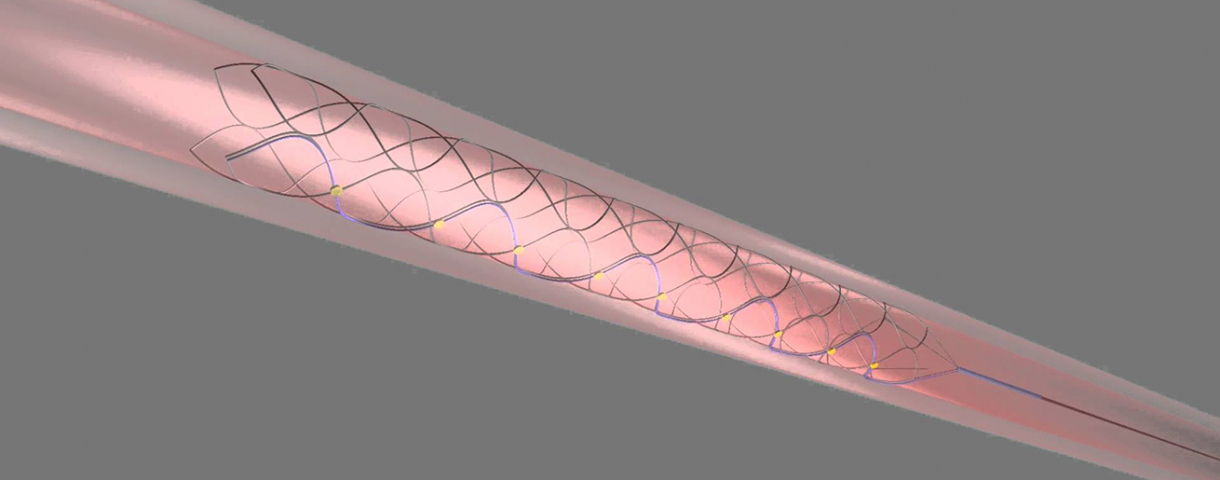Every year, around the world, between 250,000 and 500,000 people suffer a spinal cord injury. People with a spinal cord injury are two to five times more likely to die prematurely than people without a spinal cord injury, with worse survival rates in low- and middle-income countries. Additionally, spinal cord injury is associated with lower rates of school enrollment and economic participation, and it carries substantial individual and societal costs.
The Stentrode is a matchstick-sized implant delivered into the brain through a small catheter. It works by using the patient’s thoughts to control a robotic exoskeleton, which then, in turn, moves the patient’s body. By expanding, the implant presses electrodes against the patient’s blood vessel wall close to the brain, where it can record neural information and translate these signals into commands that can be used to control the exoskeleton. There is no craniotomy, no risk of infection; it is all run through the groin and passed inside the body up into the brain.
By reducing the need for invasive surgery, the Stentrode may pave the way for more practical implementations of those kinds of life-changing applications of brain-machine interfaces. The Stentrode, crafted from a space-age alloy called nitinol, could thus also benefit people with Parkinson’s disease, motor neuron disease, obsessive-compulsive disorder, and depression. It could even predict and manage seizures in epileptic patients.






